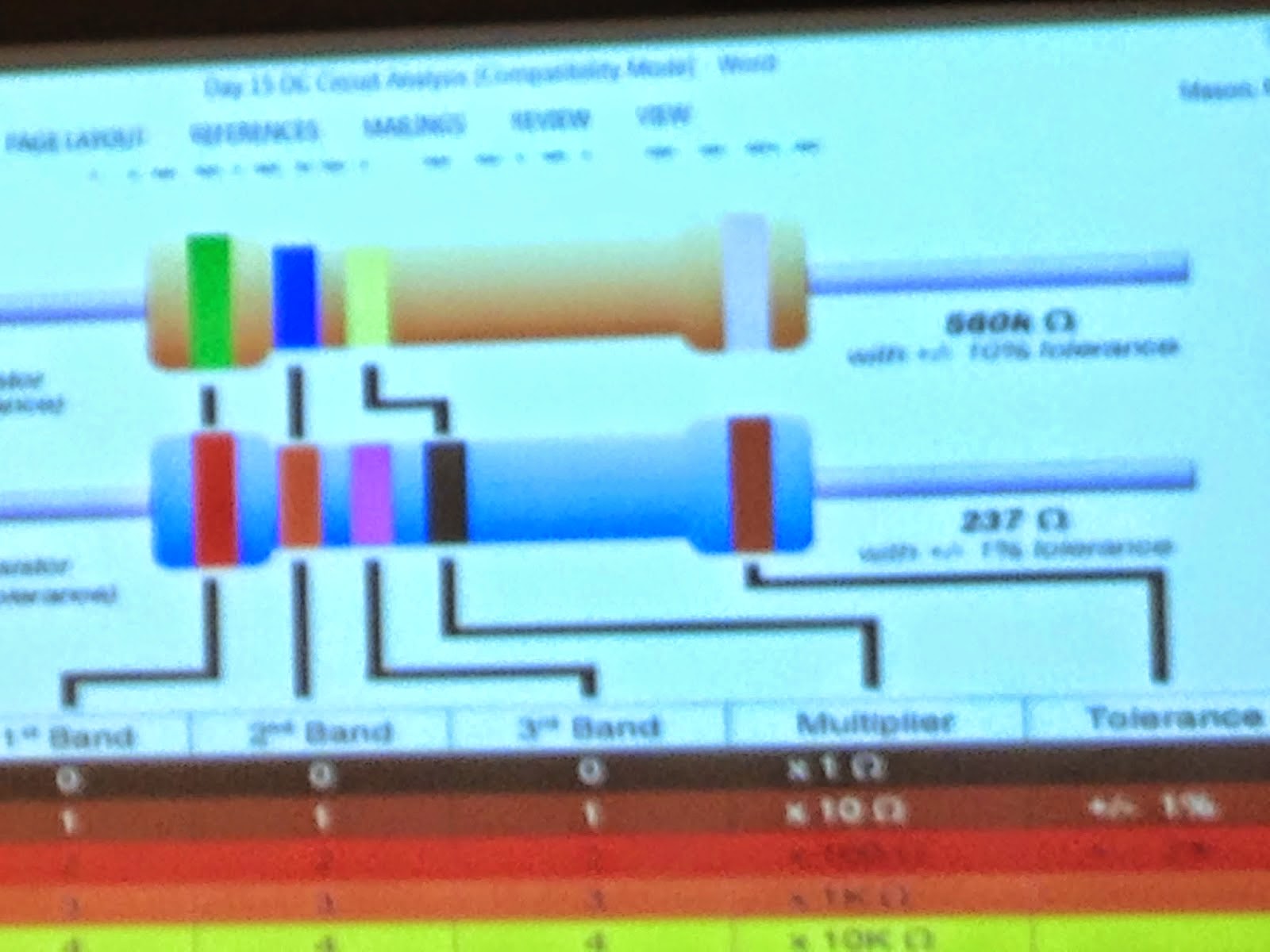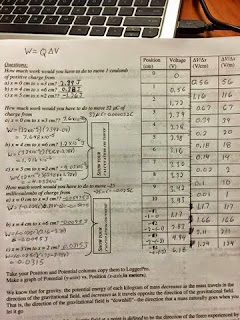First, we did an experiment called charge buildup and decay in capacitors.
We made a circuit by battery, capacitor and switch. The bulb gets dimmer when the switch is closed more. If we take the battery about and the bulbs starts getting dimmer.
As the time goes long, the bulb is dimmer and dimmer.
In this experiment, we connected two capacitors with 2 different voltage batteries. Then we need to measure the capacitors'final voltage. We found V=1/2(V1+V2).
Then we did another experiment. We used battery, capacitor, resistor and voltage measuring lead, a computer and wires to built a RC system.
This is a voltage vs. time graph we made by using Logger Pro.
We found the unit for RC by using V=IR and Q=CV.
Then we found the equation q=e^(-t/RC) by using V=Q/C, V=IR and I=dq/dt = -q/RC.
When the green equipment turn on, there will an explsion in the wires.
We graphed I vs. t graph by analyzing brightness vs. t graphs and V vs. t.
This is an exercise problem we did during the class. There are two equations one is for charge and the other is for discharge.
We used the equation of charge and found time is 1.1 second.
We used equation of discharge to found the time is 149 s.
Conclusion:
At beginning of the class, we did an experiment called charge buildup and decay in capacitors. We found how it works and how it affect the circuit. Then we did another experiment about the RC system. We found some useful equations to calculate time.



























































